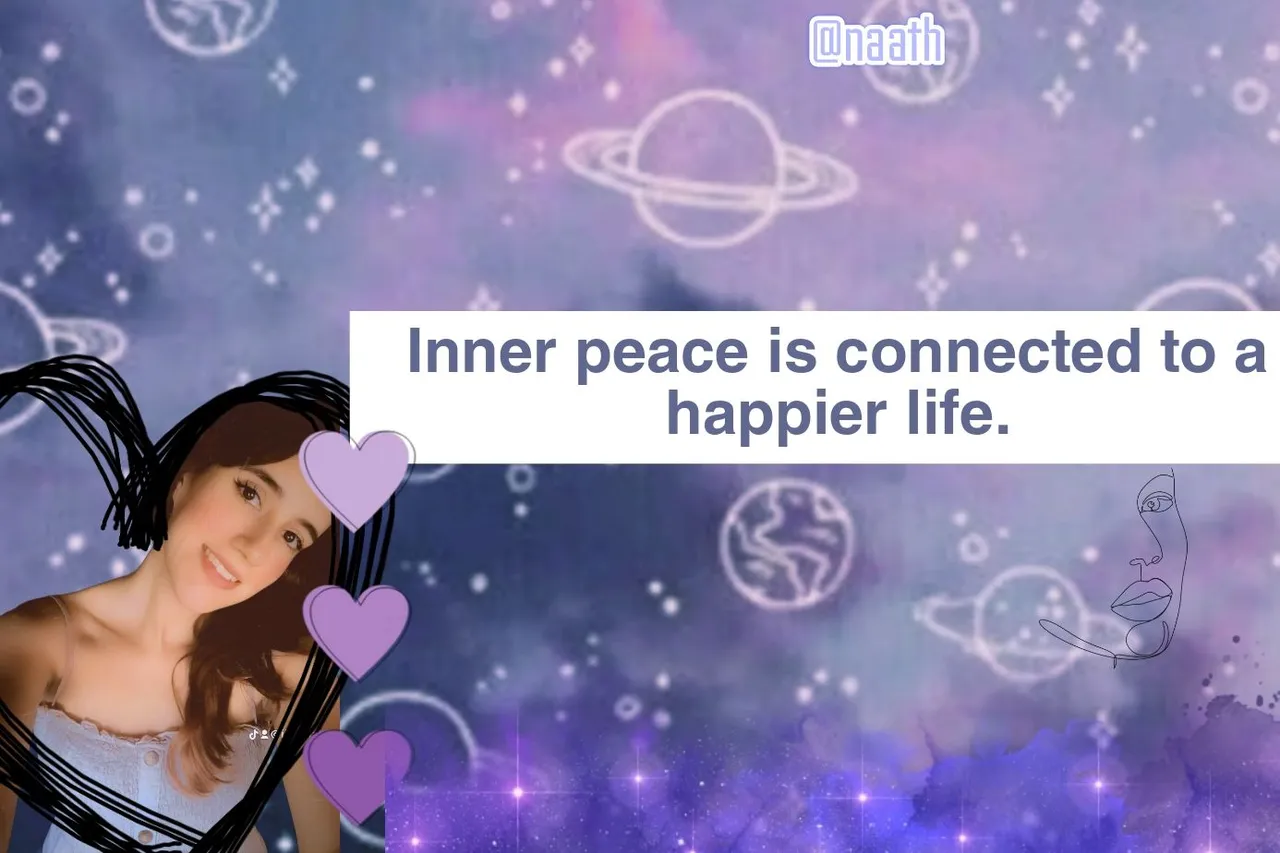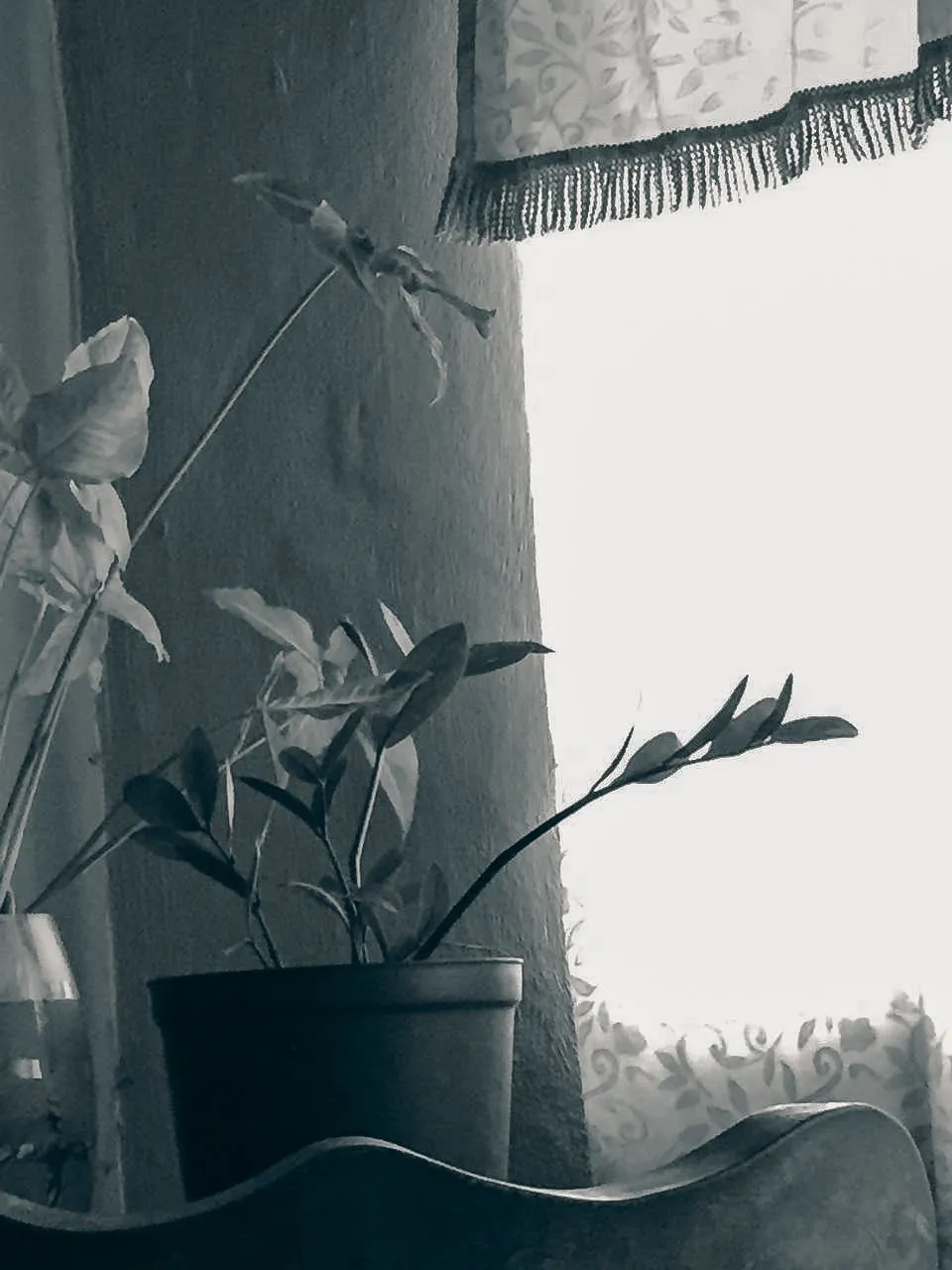
La paz interior está conectada a una vida más feliz. / Inner peace is connected to a happier life.
En el mundo actual nos bombardean constantemente con estrés y negatividad. Es fácil quedar atrapado en el caos y perder de vista lo que es verdaderamente importante en la vida. Por eso es importante dedicar tiempo a desbloquear la paz interior. Cuando encuentras la paz interior, estás mejor preparado para afrontar los retos de la vida y vivir más feliz. En esta guía, exploraremos diferentes técnicas y prácticas que puedes incorporar a tu vida diaria para cultivar la paz interior. Desde la meditación y la atención plena hasta la gratitud y el autocuidado, te proporcionaremos consejos prácticos y medidas prácticas para ayudarte a lograr una mayor sensación de paz y felicidad. Así que, si estás listo para empezar a vivir una vida más pacífica y plena, sigue leyendo para aprender a desbloquear tu paz interior.
In today's world, we are constantly bombarded with stress and negativity. It's easy to get caught up in the chaos and lose sight of what's truly important in life. That's why it's important to take the time to unlock your inner peace. When you find inner peace, you are better equipped to handle life's challenges and live a happier life. In this guide, we will explore different techniques and practices that you can incorporate into your daily life to cultivate inner peace. From meditation and mindfulness to gratitude and self-care, we will provide practical advice and actionable steps to help you achieve a greater sense of peace and happiness. So, if you're ready to start living a more peaceful and fulfilling life, read on to learn how to unlock your inner peace.

Nunca se insistirá lo suficiente en la importancia de la paz interior. Cuando estamos en paz con nosotros mismos, experimentamos una profunda sensación de bienestar que se irradia a todos los aspectos de nuestra vida. Influye positivamente en nuestras relaciones, trabajo, salud y calidad de vida en general. Nos proporciona la fuerza necesaria para superar obstáculos, tomar decisiones acertadas y afrontar los altibajos de la vida con ecuanimidad.
The importance of inner peace cannot be overstated. When we are at peace within ourselves, we experience a profound sense of well-being that radiates into all aspects of our lives. It positively impacts our relationships, work, health, and overall quality of life. It provides us with the strength to overcome obstacles, make wise decisions, and embrace life's ups and downs with equanimity.
Vivir una vida más feliz empieza por cultivar la paz interior. Es la base sobre la que podemos construir una vida llena de alegría, satisfacción y propósito. Sin paz interior, podemos encontrarnos persiguiendo constantemente fuentes externas de felicidad, sintiendo siempre que nos falta algo o que la verdadera satisfacción está fuera de nuestro alcance.
Living a happier life starts with cultivating inner peace. It is the foundation upon which we can build a life filled with joy, fulfillment, and purpose. Without inner peace, we may find ourselves constantly chasing external sources of happiness, always feeling like something is missing or that true contentment is just out of reach.
Sin embargo, alcanzar la paz interior no es un viaje único. El camino de cada persona hacia la paz interior es único y profundamente personal. Requiere autorreflexion, autocuidado y un compromiso con el crecimiento personal. Implica dejar ir los pensamientos y emociones negativos, practicar la atención plena y abrazar la gratitud y la aceptación.
However, unlocking inner peace is not a one-size-fits-all journey. Each person's path to finding inner peace is unique and deeply personal. It requires self-reflection, self-care, and a commitment to personal growth. It involves letting go of negative thoughts and emotions, practicing mindfulness, and embracing gratitude and acceptance.
La paz interior es un estado de tranquilidad y armonía dentro de uno mismo. Es la capacidad de encontrar la calma en medio del caos de la vida y de abrazar una sensación de satisfacción y plenitud. Aunque el concepto de paz interior pueda parecer abstracto, sus beneficios son tangibles y profundos. En primer lugar, la paz interior tiene un profundo impacto en nuestro bienestar mental. En un mundo lleno de estrés, ansiedad y distracciones constantes, encontrar la paz interior nos permite aquietar la mente y encontrar una sensación de serenidad. Ayuda a aliviar los efectos negativos de los factores estresantes cotidianos, mejorando nuestra salud mental general y nuestra capacidad de recuperación.
Inner peace is a state of tranquility and harmony within oneself. It is the ability to find calmness amidst the chaos of life, and to embrace a sense of contentment and fulfillment. While the concept of inner peace may seem abstract, its benefits are tangible and profound. First and foremost, inner peace has a profound impact on our mental well-being. In a world filled with stress, anxiety, and constant distractions, finding inner peace allows us to quiet our minds and find a sense of serenity. It helps to alleviate the negative effects of daily stressors, improving our overall mental health and resilience.
Además, la paz interior aumenta nuestro bienestar emocional. Nos permite gestionar mejor nuestras emociones y reaccionar ante las situaciones con ecuanimidad. En lugar de dejarnos llevar por la ira, la frustración o la tristeza, la paz interior nos ayuda a afrontar los retos con una perspectiva equilibrada y sensata. Esta estabilidad emocional no sólo beneficia a nuestro propio bienestar, sino que también repercute positivamente en nuestras relaciones con los demás.
Moreover, inner peace enhances our emotional well-being. It enables us to better manage our emotions and react to situations with a sense of equanimity. Instead of being swept away by anger, frustration, or sadness, inner peace helps us approach challenges with a level-headed and balanced perspective. This emotional stability not only benefits our own well-being but also positively impacts our relationships with others.
La paz interior fomenta la claridad y la concentración. Cuando nuestra mente está en calma y libre de agitación interior, somos más capaces de concentrarnos en el momento presente y tomar decisiones claras. Aumenta nuestra capacidad para establecer prioridades y alcanzar nuestros objetivos, lo que nos lleva a una vida más plena y con más sentido.
Inner peace fosters clarity and focus. When our minds are calm and free from inner turmoil, we are better able to concentrate on the present moment and make clear decisions. It enhances our ability to prioritize and achieve our goals, leading to a more purposeful and fulfilling life.


Un obstáculo habitual para la paz interior es el estrés. En el acelerado y exigente mundo actual, el estrés se ha convertido en una parte inevitable de nuestras vidas. Puede deberse a presiones laborales, problemas en las relaciones, preocupaciones económicas o incluso expectativas autoimpuestas. El estrés puede manifestarse tanto mental como físicamente, causando inquietud, ansiedad e incluso problemas de salud. Reconocer que el estrés es un obstáculo para la paz interior nos permite buscar activamente técnicas de gestión del estrés como la meditación, los ejercicios de respiración profunda o dedicarnos a aficiones que nos aporten alegría y relajación.
One common obstacle to inner peace is stress. In today's fast-paced and demanding world, stress has become an inevitable part of our lives. It can stem from work pressures, relationship challenges, financial worries, or even self-imposed expectations. Stress can manifest both mentally and physically, causing restlessness, anxiety, and even health issues. Recognizing stress as a barrier to inner peace allows us to actively seek stress management techniques such as meditation, deep breathing exercises, or engaging in hobbies that bring us joy and relaxation.
El pensamiento negativo es otro obstáculo que puede impedirnos alcanzar la paz interior. La autocrítica constante, la comparación con los demás y la insistencia en los errores del pasado pueden crear una mentalidad negativa, que conduce a sentimientos de infelicidad e insatisfacción. Reconocer este patrón de pensamiento negativo es el primer paso para liberarse de él. Practicando la autocompasión, la gratitud y las afirmaciones positivas, podemos cambiar gradualmente nuestra mentalidad y cultivar una visión más positiva de la vida.
Negative thinking is another obstacle that can prevent us from attaining inner peace. Constant self-criticism, comparison to others, and dwelling on past mistakes can create a negative mindset, leading to feelings of unhappiness and dissatisfaction. Recognizing this pattern of negative thinking is the first step towards breaking free from it. By practicing self-compassion, gratitude, and positive affirmations, we can gradually shift our mindset and cultivate a more positive outlook on life.
Los conflictos y las emociones no resueltos también pueden actuar como barreras para la paz interior. Guardar rencor, albergar resentimiento o reprimir las emociones puede crear confusión interior e impedirnos experimentar la verdadera paz. Es esencial reconocer el impacto de estas cuestiones no resueltas en nuestro bienestar y dar pasos hacia la curación y el perdón. Buscar el apoyo de amigos de confianza, familiares o incluso terapeutas profesionales puede orientarnos y ayudarnos a superar estos obstáculos emocionales.
Unresolved conflicts and unresolved emotions can also act as barriers to inner peace. Holding onto grudges, harboring resentment, or suppressing emotions can create inner turmoil and prevent us from experiencing true peace. It is essential to recognize the impact of these unresolved issues on our well-being and take steps towards healing and forgiveness. Seeking support from trusted friends, family, or even professional therapists can provide guidance and assistance in navigating through these emotional hurdles.


Practicar la atención plena y la meditación es una poderosa herramienta para controlar el estrés y la ansiedad. Tomarse unos minutos al día para centrarse en el momento presente puede ayudar a calmar la mente y aportar una sensación de paz. Ya sea a través de ejercicios de respiración profunda, aplicaciones de meditación guiada o simplemente encontrando un espacio tranquilo para reflexionar, incorporar la atención plena a nuestra rutina diaria puede marcar una diferencia significativa en nuestro bienestar general.
Practicing mindfulness and meditation is a powerful tool for managing stress and anxiety. Taking a few moments each day to focus on the present moment can help calm the mind and bring a sense of peace. Whether it's through deep breathing exercises, guided meditation apps, or simply finding a quiet space to reflect, incorporating mindfulness into our daily routine can make a significant difference in our overall well-being.
Otra forma eficaz de controlar el estrés es la actividad física regular. Hacer ejercicio no sólo beneficia nuestra salud física, sino que también libera endorfinas, conocidas como las hormonas del "bienestar". Ya sea dando un paseo a paso ligero, yendo al gimnasio o practicando yoga, encontrar una actividad que nos proporcione alegría y relajación puede ser un gran aliviador del estrés.
Another effective way to manage stress is through regular physical activity. Engaging in exercise not only benefits our physical health but also releases endorphins, which are known as "feel-good" hormones. Whether it's going for a brisk walk, hitting the gym, or practicing yoga, finding an activity that brings joy and relaxation can be a great stress reliever.
Además de estas prácticas, es fundamental establecer límites saludables y dar prioridad al autocuidado. Esto significa aprender a decir no cuando sea necesario, establecer expectativas realistas para nosotros mismos y dedicar tiempo a actividades que nos aporten alegría y relajación. Ya sea leer un libro, darse un largo baño o pasar tiempo en la naturaleza, el autocuidado es esencial para mantener la mente en paz.
In addition to these practices, it's crucial to establish healthy boundaries and prioritize self-care. This means learning to say no when necessary, setting realistic expectations for ourselves, and making time for activities that bring us joy and relaxation. Whether it's reading a book, taking a long bath, or spending time in nature, self-care is essential for maintaining a peaceful mind.
Vivir el momento presente nos permite olvidarnos de los remordimientos y la ansiedad, y en su lugar cultivar un sentimiento de gratitud y satisfacción. Nos hacemos más conscientes de nuestros pensamientos, emociones y sensaciones físicas, lo que a su vez nos ayuda a comprendernos mejor a nosotros mismos y nuestras reacciones ante el mundo que nos rodea. La atención plena puede practicarse de muchas maneras. Algunas personas encuentran consuelo en la meditación, en la que se sientan en silencio, se concentran en su respiración o en un objeto concreto y observan sus pensamientos sin juzgarlos. Otras encuentran la atención plena en las actividades cotidianas, como dar un paseo por la naturaleza, saborear una comida deliciosa o incluso fregar los platos con plena atención y presencia.
Living in the present moment allows us to let go of regrets and anxieties, and instead cultivate a sense of gratitude and contentment. We become more aware of our thoughts, emotions, and physical sensations, which in turn helps us better understand ourselves and our reactions to the world around us. Mindfulness can be practiced in many different ways. Some people find solace in meditation, where they sit quietly, focusing on their breath or a specific object, and observing their thoughts without judgment. Others find mindfulness in everyday activities, such as taking a walk in nature, savoring a delicious meal, or even washing dishes with full attention and presence.
Cultivar la gratitud y el aprecio es una práctica poderosa que puede mejorar significativamente nuestra felicidad y bienestar generales. En el acelerado y a menudo estresante mundo actual, es fácil dejarse llevar por el ajetreo y el bullicio, centrándose en lo que no tenemos o en lo que va mal en nuestras vidas. Sin embargo, tomarse un tiempo para hacer una pausa y reflexionar sobre aquello por lo que estamos agradecidos puede cambiar nuestra perspectiva y generar una sensación de paz interior.
La gratitud es la práctica de reconocer y apreciar las cosas buenas de nuestra vida, tanto las grandes como las pequeñas. Puede ser tan sencillo como expresar gratitud por un hermoso amanecer, un familiar cariñoso o una comida deliciosa. Al dirigir conscientemente nuestra atención a los aspectos positivos de nuestra vida, empezamos a cambiar nuestra mentalidad de carencia a abundancia. La investigación ha demostrado que practicar regularmente la gratitud puede tener profundos efectos en nuestro bienestar mental y emocional. Se ha relacionado con el aumento de la felicidad, la mejora de la calidad del sueño, la reducción de los niveles de estrés e incluso la mejora de las relaciones. Cuando cultivamos la gratitud, entrenamos nuestra mente para centrarnos en lo positivo en lugar de pensar en la negatividad o la comparación. Este cambio de mentalidad nos permite experimentar más alegría, satisfacción y paz en nuestra vida cotidiana.
Cultivating gratitude and appreciation is a powerful practice that can significantly enhance our overall happiness and wellbeing. In today's fast-paced and often stressful world, it's easy to get caught up in the hustle and bustle, focusing on what we don't have or what's going wrong in our lives. However, taking the time to pause and reflect on what we are grateful for can shift our perspective and bring about a sense of inner peace. Gratitude is the practice of acknowledging and appreciating the good things in our lives, both big and small. It can be as simple as expressing gratitude for a beautiful sunrise, a loving family member, or a delicious meal. By consciously directing our attention to the positive aspects of our lives, we begin to shift our mindset from one of lack to one of abundance.
Hay varias formas de incorporar la gratitud a nuestra rutina diaria. Un método popular es llevar un diario de gratitud, en el que escribimos cada día algunas cosas por las que estamos agradecidos. Este simple acto de escribir ayuda a consolidar nuestros sentimientos de agradecimiento y sirve como recordatorio de la abundancia en nuestras vidas. Otra práctica consiste en expresar la gratitud verbalmente o mediante actos de amabilidad, como dar las gracias a alguien por su ayuda o mostrar aprecio por un gesto considerado.
There are various ways to incorporate gratitude into our daily routine. One popular method is to keep a gratitude journal, where we write down a few things we are grateful for each day. This simple act of writing helps to solidify our feelings of appreciation and serves as a reminder of the abundance in our lives. Another practice is to express gratitude verbally or through acts of kindness, such as thanking someone for their help or showing appreciation for a thoughtful gesture.


Dejar ir la negatividad y practicar el perdón son herramientas poderosas para desbloquear la paz interior y vivir una vida más feliz. Aferrarse a los rencores, el resentimiento y las emociones negativas sólo nos lastra, impidiéndonos experimentar la verdadera felicidad y satisfacción. El perdón no consiste en perdonar u olvidar lo sucedido, sino en tomar la decisión consciente de liberar las emociones negativas asociadas a un acontecimiento o a una persona en particular. Es un regalo que nos hacemos a nosotros mismos, liberándonos de la carga de la ira, la amargura y el resentimiento. Al perdonar a los demás, creamos espacio para la curación y el crecimiento personal.
Letting go of negativity and practicing forgiveness are powerful tools to unlock inner peace and live a happier life. Holding onto grudges, resentment, and negative emotions only weighs us down, preventing us from experiencing true happiness and contentment. Forgiveness is not about condoning or forgetting what has happened, but rather a conscious decision to release the negative emotions associated with a particular event or person. It is a gift we give ourselves, freeing ourselves from the burden of anger, bitterness, and resentment. By forgiving others, we create space for healing and personal growth.
Para practicar el perdón, es esencial reflexionar sobre la situación o la persona que nos ha causado dolor. Esta reflexión nos permite profundizar en nuestras propias emociones y desencadenantes, ayudándonos a comprender las causas profundas de nuestros sentimientos negativos. Es importante reconocer nuestro dolor y validar nuestras emociones, pero también reconocer que aferrarnos a ellas sólo perpetúa nuestro sufrimiento. Una vez que hemos reconocido nuestro dolor, podemos iniciar el proceso de perdón. Esto puede implicar escribir una carta a la persona que nos ha herido, expresando nuestros sentimientos y deseos de curación. También puede implicar buscar el apoyo de un amigo de confianza, un terapeuta o un grupo de apoyo que nos ayude a recorrer el camino del perdón.
To practice forgiveness, it is essential to reflect on the situation or person that has caused us pain. This reflection allows us to gain insight into our own emotions and triggers, helping us understand the root causes of our negative feelings. It is important to acknowledge our pain and validate our emotions, but also to recognize that holding onto them only perpetuates our suffering. Once we have acknowledged our pain, we can begin the process of forgiveness. This may involve writing a letter to the person who has hurt us, expressing our feelings and desires for healing. It may also involve seeking support from a trusted friend, therapist, or support group to help navigate the journey of forgiveness.


El autocuidado implica tomar medidas deliberadas para cuidar nuestro bienestar físico, mental y emocional. Significa reconocer cuándo necesitamos descansar, establecer límites y participar en actividades que nos aporten alegría y relajación. Puede ser algo tan sencillo como darnos un baño de burbujas, leer nuestro libro favorito o dar un tranquilo paseo por la naturaleza. Dedicar tiempo al autocuidado nos permite reponer energías y encontrar el equilibrio en nuestras vidas. Igualmente importante es cultivar la autocompasión. Es natural ser nuestro peor crítico, pero reñirnos constantemente sólo conduce a un discurso negativo y a una disminución de la autoestima. Practicar la autocompasión implica tratarnos con amabilidad, comprensión y perdón. Significa reconocer nuestros errores y defectos sin juzgarnos y mostrar la misma compasión que ofrecemos a los demás.
Self-care involves taking deliberate actions to nurture our physical, mental, and emotional well-being. It means recognizing when we need rest, setting boundaries, and engaging in activities that bring us joy and relaxation. It could be as simple as indulging in a warm bubble bath, reading a favorite book, or going for a peaceful walk in nature. By carving out time for self-care, we replenish our energy and find a sense of balance in our lives. Equally important is cultivating self-compassion. It's natural to be our own worst critic, but constantly berating ourselves only leads to negative self-talk and a diminished sense of self-worth. Instead, practicing self-compassion involves treating ourselves with kindness, understanding, and forgiveness. It means acknowledging our mistakes and shortcomings without judgment and extending the same compassion we offer to others.
Recuerda que el autocuidado y la autocompasión no son actos egoístas, sino componentes esenciales de una vida más feliz y plena. Al cultivar estas prácticas, desbloqueas la paz interior y cultivas una profunda sensación de bienestar que se irradia a todos los aspectos de tu vida.
Remember, self-care and self-compassion are not selfish acts but essential components of a happier and more fulfilling life. By nurturing these practices, you unlock inner peace and cultivate a deeper sense of well-being that radiates into all aspects of your life.


Crear un entorno tranquilo es esencial para cultivar la paz interior y vivir una vida más feliz. Nuestro entorno tiene un profundo impacto en nuestro bienestar mental y emocional. Cuando estamos rodeados de caos, desorden y desorganización, puede resultar difícil encontrar la paz interior y la tranquilidad. Por lo tanto, es crucial diseñar conscientemente nuestros espacios físicos para promover una sensación de calma y armonía. Empiece por despejar su espacio vital. Retire todos los objetos innecesarios que ya no le sirvan para nada o que no le aporten alegría. Despejar el desorden físico puede tener un efecto tremendo en nuestra claridad mental y bienestar general. Cree espacios designados para cada cosa, asegurándose de que cada objeto tiene su lugar. Esto le ayudará a mantener un entorno organizado y libre de desorden, lo que le permitirá disfrutar de un ambiente más tranquilo y sereno.
Creating a peaceful environment is essential for cultivating inner peace and living a happier life. Our surroundings have a profound impact on our mental and emotional well-being. When we are surrounded by chaos, clutter, and disarray, it can be challenging to find inner peace and tranquility. Therefore, it is crucial to consciously design our physical spaces to promote a sense of calm and harmony. Start by decluttering your living space. Remove any unnecessary items that no longer serve a purpose or bring you joy. Clearing physical clutter can have a tremendous effect on our mental clarity and overall well-being. Create designated spaces for everything, ensuring that each item has its place. This will help you maintain an organized and clutter-free environment, allowing for a more peaceful and serene atmosphere.
Considera la posibilidad de incorporar elementos de la naturaleza a su entorno. Introducir plantas en su hogar no sólo añade belleza, sino que purifica el aire y crea un ambiente relajante. La luz natural también es vital para crear un ambiente tranquilo. Abra las cortinas o persianas durante el día para que entre toda la luz natural posible. Si la luz natural es limitada, invierte en iluminación artificial suave y cálida para crear una atmósfera tranquilizadora. Otra forma de crear un entorno tranquilo es establecer un espacio destinado a la relajación y la atención plena. Puede ser un rincón acogedor con cojines y mantas, una sala de meditación o un jardín sereno. Llene este espacio con objetos que le aporten alegría y fomenten la relajación, como velas aromáticas, aceites esenciales, obras de arte relajantes o un cómodo cojín de meditación. Este espacio dedicado le servirá de recordatorio para dar prioridad al cuidado personal y le proporcionará un santuario para momentos de calma y reflexión.
Consider incorporating elements of nature into your surroundings. Bringing plants into your home not only adds beauty but also purifies the air and creates a soothing ambiance. Natural light is also vital for creating a peaceful environment. Open up your curtains or blinds during the day to let in as much natural light as possible. If natural light is limited, invest in soft and warm artificial lighting to create a calming atmosphere. Another way to create a peaceful environment is to establish a designated space for relaxation and mindfulness. This could be a cozy corner with cushions and blankets, a meditation room, or a serene garden. Fill this space with items that bring you joy and promote relaxation, such as scented candles, essential oils, calming artwork, or a comfortable meditation cushion. This dedicated space will serve as a reminder to prioritize self-care and provide a sanctuary for moments of calm and reflection.
Recuerda que la paz interior no es un destino, sino un proceso continuo. Es importante ser paciente con uno mismo y dejar espacio para el crecimiento y el aprendizaje. Celebre las pequeñas victorias a lo largo del camino y reconozca que los contratiempos son una parte natural del viaje. Cuidar de tu bienestar físico, emocional y mental es crucial. Da prioridad a las actividades de autocuidado que nutran tu cuerpo, mente y alma. Ya sea practicar yoga o meditación, dedicarse a aficiones que le gusten o pasar tiempo de calidad con sus seres queridos, encuentre lo que le produce alegría y conviértelo en una parte habitual de su vida. Cultivar la gratitud y practicar la amabilidad hacia uno mismo y hacia los demás puede contribuir en gran medida a su sensación general de paz y felicidad. Cambia tu enfoque de lo que falta en tu vida a lo que agradeces, y difunde positividad y amabilidad allá donde vayas. Acude a amigos, familiares o profesionales de confianza si necesitas orientación o ayuda en tu camino. La paz interior y una vida más feliz son una búsqueda que dura toda la vida, pero las recompensas son inconmensurables. Acepta el proceso, sé amable contigo mismo y aprecia los momentos de paz y alegría que encuentres. Que tu viaje hacia la paz interior esté lleno de serenidad, plenitud y una profunda sensación de bienestar.
Remember, inner peace is not a destination but a continuous process. It's important to be patient with yourself and allow room for growth and learning. Celebrate small victories along the way and acknowledge that setbacks are a natural part of the journey. Taking care of your physical, emotional, and mental well-being is crucial. Prioritize self-care activities that nourish your body, mind, and soul. Whether it's practicing yoga, meditation, engaging in hobbies you love, or spending quality time with loved ones, find what brings you joy and make it a regular part of your life. Cultivating gratitude and practicing kindness towards yourself and others can greatly contribute to your overall sense of peace and happiness. Shift your focus from what is lacking in your life to what you are grateful for, and spread positivity and kindness wherever you go. Reach out to trusted friends, family, or professionals if you need guidance or assistance along your journey. Inner peace and living a happier life is a lifelong pursuit, but the rewards are immeasurable. Embrace the process, be kind to yourself, and cherish the moments of peace and joy that you encounter. May your journey towards inner peace be filled with serenity, fulfillment, and a profound sense of well-being.
Gracias por llegar hasta aquí y apoyarme siempre 🧡
Thank you for reading this far and always supporting me 🧡

Las imágenes son de mi autoría y fueron editadas con Picsart - All the images are my own and were edited with Picsart
Traducción - Translate with Deepl
Separador de Texto editado en Picsart - Text Separator edited with Picsart
